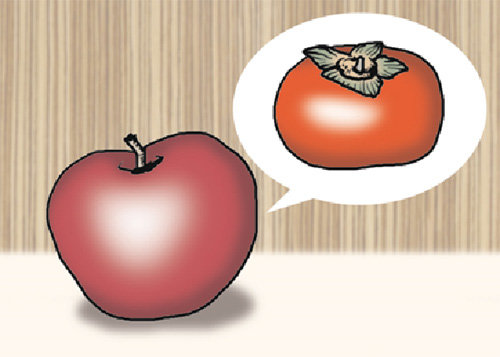A persimmon that turned into a Chinese apple
A persimmon that turned into a Chinese apple
Posted October. 30, 2019 07:54,
Updated October. 30, 2019 07:54

A painful memory or wounded heart sometimes can be used as a material for art. That is the case with Chinese-American poet Li-Young Lee. Lee’s family left Indonesia in 1964, when anti-Chinese sentiment began to grow in the country, and fled through Hong Kong, Macao, and Japan to arrive in the U.S. But they faced discrimination in the U.S. as well.
Lee’s poem “Persimmons” begins by recalling his memory of being discriminated. “In sixth grade Mrs. Walker/ slapped the back of my head/ and made me stand in the corner/ for not knowing the difference/ between persimmon and precision.” Lee as a boy felt small and got punished for confusing persimmons with precision. But looking back on the episode as an adult, persimmon did have something to do with precision. It requires precision to choose ripe persimmons with sweet fragrance and brown-spotted color. It also requires precision to “Peel the skin tenderly, not to tear the meat./ Chew the skin, suck it, and swallow.”
But his American teacher did not know it. One day, the teacher brought a persimmon to class. After cutting it up, she told everyone to taste a “Chinese apple.” She did not know that she had to wait until the persimmon gets ripe and peel the skin with her hands instead of a knife. Her words and action was the result of her ignorance. Putting a persimmon into an American perspective without knowing the qualities of the Chinese fruit was another form of violence. In other words, it was orientalism.
The boy later became a poet and looked back on his scars as a child. To him, persimmons were the East. He saw the oriental sentiment, culture, and spirit in persimmons that the West could not see because of their eco-centric bias. Lee’s childhood scars naturally healed in the process.
Headline News
- Med professors announce intention to leave hospitals starting Thursday
- Bridge honoring Sgt. Moon Jae-sik unveiled in Pennsylvania
- Chief of Staff Chung tells presidential secretaries to stay away from politics
- US FTC bans noncompete agreements
- N. Korea launches cyberattacks on S. Korea's defense companies







